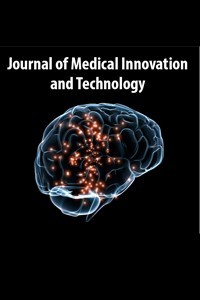3B Baskılı termoplastik poliüretan iskeleye ekilen insan makrofajlarının hücresel yanıtları
makrofaj, 3b baskı, TPU, hücre kültürü
The cellular responses of human macrophages seeded on 3D printed thermoplastic polyurethane scaffold
macrophages, 3d printed, TPU, cell culture,
___
- Langer R, Vacanti JP. Tissue engineering. Science. 1993;260:920-6.
- Richards DJ, Tan Y, Jia J, Yao H, Mei Y. 3D Printing for tissue engineering. Isr J Chem. 2013;53:805-14.
- Harynska A, Kucinska-Lipka J, Sulowska A, Gubanska I, Kostrzewa M, Janik H. Medical-Grade PCL based polyurethane system for FDM 3D Printing-Characterization and Fabrication. Materials (Basel). 2019 Mar 16;12:887.
- Joseph J, Patel RM, Wenham A, Smith JR. Biomedical applications of polyurethane materials and coatings. Trans Inst Met Finish. 2018;96:121-29.
- Xiao J, Gao Y. The manufacture of 3D printing of medical grade TPU. Prog Addit Manuf 2017; 2: 117-123.
- Anderson JM. Biological responses to materials. Annu Rev Mater Res 2001; 3: 81-110.
- Martin KE, García AJ. Macrophage phenotypes in tissue repair and the foreign body response: Implications for biomaterial-based regenerative medicine strategies. Acta Biomaterialia 2021;133:4-16.
- Farrugia BL, Brown TD, Upton Z, Hutmacher DW, Dalton PD, Dargaville TR. Dermal fibroblast infiltration of poly(ε-caprolactone) scaffolds fabricated by melt electrospinning in a direct writing mode. Biofabrication. 2013;5: 025001.
- Huerta RR, Silva E, Ekaette I, El-Bialy T, Saldaña MDA. High-Intensity ultrasound-assisted formation of cellulose nanofiber scaffold with low and high lignin content and their cytocompatibility with gingival fibroblast cells. Ultrason Sonochem 2020;64:104759.
- Chen WC, Wei YH, Chu IM, Yao CL. Effect of chondroitin sulphate C on the in vitro and in vivo chondrogenesis of mesenchymal stem cells in crosslinked type II collagen scaffolds. J Tissue Eng Regen Med 2013;7:665-72.
- Griffin MF, Naderi N, Kalaskar DM, Seifalian AM, Butler PE. Argon plasma surface modification promotes the therapeutic angiogenesis and tissue formation of tissue-engineered scaffolds in vivo by adipose-derived stem cells. Stem Cell Res Ther 2019;10:1-14.
- Tatai L, Moore TG, Adhikari R, Malherbe F, Jayasekara R, Griffiths I, Gunatillake PA. Thermoplastic biodegradable polyurethanes: The effect of chain extender structure on properties and in-vitro degradation. Biomaterials 2007;28:5407-17.
- Mi HY, Jing X, Salick MR, Cordie TM, Peng XF, Turng LSh. Properties and fibroblast cellular response of soft and hard thermoplastic polyurethane electrospun nanofibrous scaffolds. J Biomed Mater Res B Appl Biomater . 2015;103:960-70.
- Woitschach F, Kloss M, Schlodder K, Borck A, Grabow N, Reisinger EC, Sombetzki M. In vitro study of the interaction of innate immune cells with liquid silicone rubber coated with zwitterionic methyl methacrylate and thermoplastic polyurethanes. Materials 2021;14:5972.
- Gordon S, Plüddemann A, Martinez Estrada F. Macrophage heterogeneity in tissues: phenotypic diversity and functions. Immunol Rev 2014;262:36–55. Erdos EG, Skidgel RA. Neutral endopeptidase 24.11 (enkephalinase) and related regulators of peptide hormones. FASEB Journal 1989;3:145-151.
- Huang X, He C, Lin G, Lu L, Xing K, Hua X, Sun S, Mao Y, Song Y, Wang J, Li S. Induced CD10 expression during monocyte-to-macrophage differentiation identifies a unique subset of macrophages in pancreatic ductal adenocarcinoma, Biochem Biophys 2020;524:1064-71.
- ISSN: 2667-8977
- Başlangıç: 2019
- Yayıncı: Eskişehir Osmangazi Üniversitesi
3B Baskılı termoplastik poliüretan iskeleye ekilen insan makrofajlarının hücresel yanıtları
Mehtap YUKSEL EGRILMEZ, Ufkay KARABAY, Selma AYDEMİR, Başak BAYKARA, R. Bugra HUSEMOGLU
Merve Nur SOYKAN, Tayfun ŞENGEL, Aliakbar EBRAHİMİ, Murat KAYA, Burcugül ALTUĞ TASA, Hamed GHORBANPOOR, Onur UYSAL, Ayla EKER SARIBOYACI, Huseyin AVCİ
İsmail ÖZSOYKAL, R. Bugra HUSEMOGLU, Ayşegül YURT
The Smallest Workers in Regenerative Medicine: Stem Cell-Derived Exosomes
Özer ÖNER, Süleyman Gökhan KARA, İhsan KARAKAYA, Ayla EKER SARIBOYACI, Onur UYSAL, Sibel GÜNEŞ, Huseyin AVCİ
Ufkay KARABAY, Selma AYDEMİR, Mehtap YUKSEL EGRILMEZ, Başak BAYKARA, R. Bugra HUSEMOGLU
